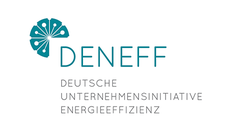Search eceee proceedings
Assessing the heat pump market in the industry
Panel: 2. Sustainable production towards a circular economy
This is a peer-reviewed paper.
Authors:
Jean-Marie Fourmigue, EDF, France
Pierre Primard, EDF R&D, France
Marc Berthou, EDF R&D, Département TREE, France
Abstract
In the French Industry, the energy lost through waste heat accounts for roughly 25 % of its total energy consumption. Though recognized as of significant potential for recovery, heat wastes are at 50 % concentrated in low level temperature wastes, below 100 °C, too cold to be directly used through a heat exchanger for most industrial processes. Hence, EDF contributed to the development of heat pumps that were segmented in this study in three levels of maximum condensing temperature: 70 °C (HP 1), 100 °C (HP 2) and 150 °C (HP 3).
This paper proposes a three steps method to evaluate the potential of heat recovery with HPs in France for each industry sector and under consideration of technological and economic constraints.
In the first step, we build an indicator to show the statistical potential of each HP by cross referencing a heat waste with a heat consumption database taking into account the relevance of the HP compared to a heat exchanger, and the HP coverable share of the needs. In the second step, heat wastes and industrial processes are identified and matched to validate the technical feasibility of an HP. The third step consolidates the results by confronting them to the field: industrial references, energy audits and on-site visits.
This paper presents the results for HP1. The potential for this HP in the Malting sector (NACE 11.06Z) particularly stands out. Most of the heat needs come from drying: the malt’s humidity is reduced from 45 % down to 5 % at a temperature range from 60 to 85 °C, generating heat wastes. The HP is integrated into the drying process recovering the hot exhausted vapour and using its remaining heat to fuel back the dryer. The malting industry counts at least two important references in France in Strasbourg and Vitry le François. For each 100 tons of product, the HP can roughly save 60 MWh of gas and consumes an additional 12.5 MWh of electricity preventing 2 tons of CO2 emissions.
Downloads
Download this paper as pdf: 2-026-18_Fourmigue.pdf
Download this presentation as pdf: 2-026-18_Fourmigue_pres.pdf















